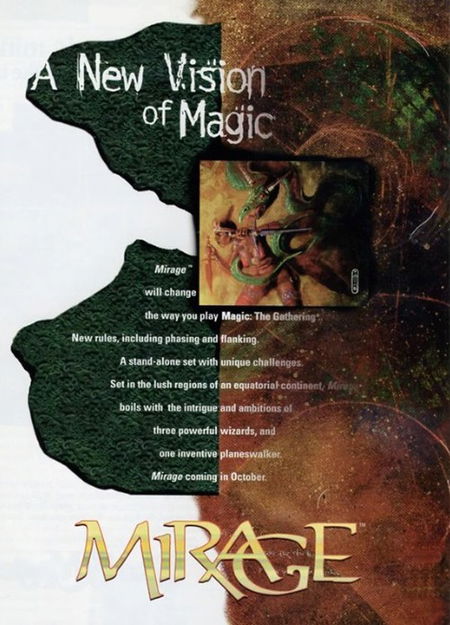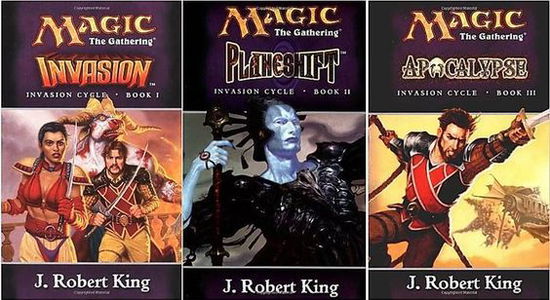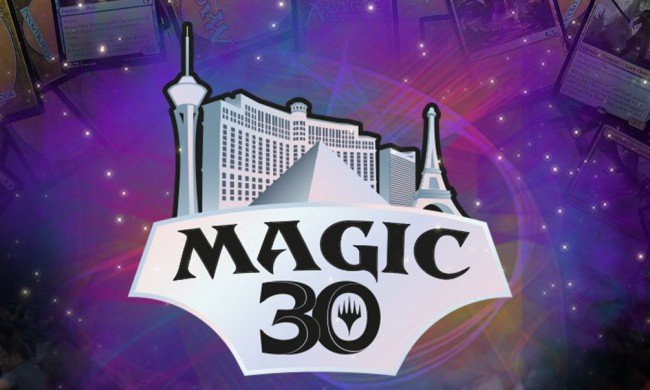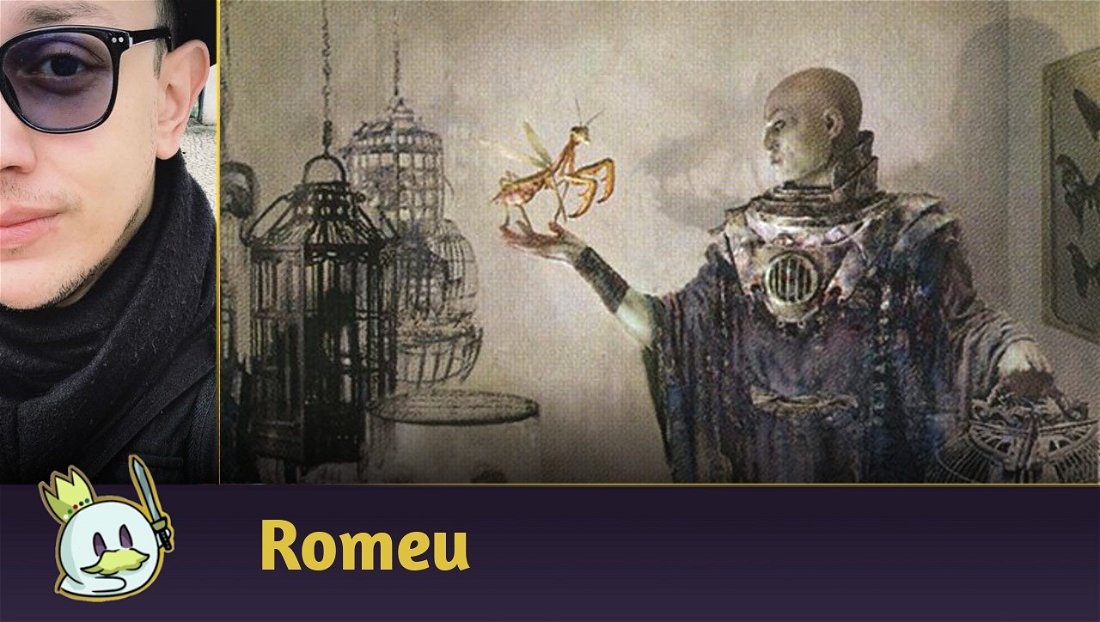Commander has its history closely linked to the early concepts of Magic: the Gathering, where powerful mages duel for the sovereignty of the multiverse. These mages summon legendary creatures, heroes, and monsters from other realities to their aid. Legends are the lifeblood of Commander and a big part of what makes Magic unique.
The Gold Cards and the First Legends
The most important characters in the lore of Magic the Gathering are immortalized in the game through legends. Inspired by D&D campaigns, legendary creatures as we know them date back to one of Magic's first expansions, from June 1994, Legends.

The "Legends Rule" has changed many times to reach an ideal design, allowing its use in a balanced and fun way.
For this article, we will not consider the power of legends, although many of them can be considered strong. Its relevance is defined by importance to the game's story, trivia, and appeal to Commander.
The Legends in the early years
1993 - Alpha
The first core sets, also known as "ABUR", which range from Alpha through Revised, doesn't have legendary cards. However, the design of the legendary cards was already in place before their release.
We can see many future legends mentioned in the Flavor Text of some cards.
Asmoranomardicadaistinaculdacar
Asmoranomardicadaistinaculdacar, or Asmor, one of the hidden legends in Alpha, was revisited in Modern Horizons 2. The character gained notoriety, however her presence was frequent in Magic cards over the years, including being the protagonist of the tale Chef's Surprise in the anthology Distant Planes released in June 1996.

1994 - Legends
Legends was revolutionary in terms of design, bringing multicolored cards and the Legends Rule, which at the time also changed the way decks were built.Legends would change the game forever with the idea of differentiating the important characters, and "the Gold Cards" were born, which belonged not just to one, but to several mana colors, thus creating the first multicolored spells.
The various Gold Card cycles at the time were called "Arcs" or "Family Trees", being led by their Elder Dragons representing three colors. Along with them were larger legends, which might or might not have flavor text, being two for each Arc, representing the most powerful heroes or villains of Dominaria.

The Elder Dragons cycle would be the inspiration for the creation of a format called Elder Dragon Highlander, abbreviated EDH, which would later be called Commander.
Among the dragons, none would be more famous than the Planeswalker Nicol Bolas. His story was told in various materials, with his biggest arc in the Gatewatch Saga ended in War of the Spark. His version in Legends was the protagonist of a deck tech that can be read here.
1995 - Homelands
1995 was an important expansion year for the game. Several reprint sets have been created for new players around the world: Fourth Edition, Chronicles, Renaissance.
The only two previously unreleased sets were Ice Age and Homelands. The Ice Age brought important innovations, such as snow lands and a reduced number of legends. The most notable is Merieke Ri Berit, which was based on the ballad La Belle Dame sans Merci written by the English poet John Keats.

However, Homelands was long considered the worst set in Magic. Although it had some good cards, it didn't have an elegant design, its mechanics weren't innovative or impactful in the constructed formats, and it didn't have good synergies. As Mark Rosewater puts it, "It didn't have many of the qualities by which we now judge a set design."
So, why choose Homelands as the one that would present the most interesting legends?
“To be fair, the set was very flavorful, so it wasn't without any design merit.”
- Mark Rosewater
Ihsan's Shade Tribal
Ihsan was a proud Serra Paladin who fell victim to his arrogance. Believing he was capable of destroying Baron Sengir, Ulgrotha's Vampire Lord, he devised a plan of betrayal and subterfuge. Knowing that his heresy would not be tolerated by Serra's Inquisition, he articulated in secret.
He was eventually defeated by Sengir, the Dark Baron and sentenced to live in an eternity of servitude in the form of a shade. Keeping fragments of his memory, Ihsan took his truth and his dishonor to the grave beyond.
“Ihsan, the weak. Ihsan, the fallen. Ihsan, the betrayer. He has brought shame to the Serra Paladins where none existed before. May his suffering equal his betrayal.”
- Baris, Serra Inquisitor
1996 - Mirage
Mirage brought important changes to the game: it consolidated the Blocks model, sequences of sets released with the same theme in a sequential story.
Alliances, its predecessor, was a direct continuation of Ice Age. However, the main difference is that the Mirage block would make the abilities and synergies continue among the sets that compose it, since Ice Age was very different from that, practically abandoning snow synergies and embracing themes linked to friendly and enemy colors.
It is worth noting that before blocks, it wasn't possible to build Magic decks using only cards from expansions without adding Core Sets. The blocks were independent and balanced in terms of card proportions, rarities and power, being able to be used to start new players, and most importantly, they allowed the existence of limited formats such as Sealed Deck and Booster Draft.
The Weatherlight Saga begins at the end of the Mirage block events, making it the first major story in Magic the Gathering.

An important point about Mirage, in addition to game design issues, is its representation. I met MTG along with its launch in Brazil during the arrival of Fourth Edition and Ice Age. We bought two decks, one from each release, to play between brothers — it was fun, the kids at school liked it and many started in the hobby.
However, I started collecting and playing for real with the arrival of Mirage. Its tropical African setting was conceived by Sue Ann Harkey and was unlike anything I had seen in fantasy until then.
Mirage and Visions were set in Jamuraa after the disappearance of the planeswalker Teferi, Mage of Zhalfir. The three powerful spellcasters representing their three nations of Femeref, Zhalfir and Suq'Ata — Mangara of Corondor, Jolrael, Empress of Beasts and Kaervek the Merciless — searches for Teferi and of his secrets, triggering the events that would cause The Mirage War.
To illustrate the theme of this iconic set, let's get to know a little about the history of Asmira, Holy Avenger, an example of a strong woman in the MTG universe.
Asmira, Holy Avenger
Asmira was a prophetess of Femeref and leader of that nation during the Mirage Wars of Dominaria. She led the expedition to free Mangara, whom Kaervek had imprisoned in a Mwonvuli Amber Prison. Asmira was posthumously given the title of Holy Avenger for her brave sacrifice, an enormous bust of Asmira is in the Council of Voices in Femeref, honoring her legacy.
1997 - Tempest
Tempest was developed by mathematician and game designer Richard Garfield, Ph.D. on his return to Magic, since the Antiquities expansion the game's creator hasn't participated in card development together with the design team.
Garfield and Michael Elliott's team created a Golden Age, the Tempest and Urza blocks, which for many are the best in Magic, at least the most complex and with the highest Power Level.
We had a few legends between Mirage and Tempest, some of them unbalanced and complex and others formidable, such as Selenia, Dark Angel. In its T2 (current Standard), the guardian angel was unbeatable, before the rules review it was really outstanding. These revisions made the game evolve, and make Magic closer to what we know today.

Selenia was a true angel of the Serra Kingdom. She was an extraordinary warrior commanded by Radiant, Archangel who protected the plane against the Phyrexian invasion. During the clashes, Selenia was taken prisoner by Phyrexians, who then transformed her into a dark angel.
Compleated Selenia, Dark Angel, she was given the task of watching over a young nobleman named Crovax of Urborg, under the guise of being the family's guardian angel. The lonely nobleman came to see the angel as his only lover and friend. The tragedy of Crovax and Selenia allows for a separate topic, as well as a deck tech!
1998 - Urza's Saga
Describing Urza's Saga is always a delicate task. After all, this moment in history was nicknamed "Combo Winter". To understand this period, we need to go back a bit further— before Mirage-Visions, combos weren't a consistent strategy, and for many the Combo archetype was born alongside the Prosperous Bloom deck.
So in Tempest combos were already popular and generated great discussions in the community. Here we come to the general Metagame after the release of Urza's Saga, which was the pinnacle of combo-based strategies.
Fast-paced games filled all tournament formats: Magic had changed. Tolarian Academy, Serra's Sanctum and Gaea's Cradle played a big part in this period, being the basis for several decks that still exist in Vintage. This led to the DCI banning numerous cards in December 1998. Now let's recall an important character:

Barrin possessed an extremely high ability to learn and use magic. It was prophesied that he would become the most powerful mage in Dominaria. Barrin, Master Wizard was one of the most prodigious educators of the Tolarian Academy tutoring famous mages like Teferi, Temporal Archmage and Jhoira, Ageless Innovator.
He aided Urza in defending Dominaria from its Phyrexian invaders. The legendary master wizard was the husband of Rayne, Academy Chancellor and father of Hanna.
1999 - Urza's Destiny
Aware of the inevitable Phyrexian invasion of Dominaria, Urza devised a complex plan to create a champion. Urza's Legacy was bigger than a collection of artifacts. It was constructed for a given purpose. In this way, the Legacy represented an intangible but undeniable guiding force; a destiny built by the artificer.
The set fulfilled the initial idea for the Urza's Saga set, which was to be based on enchantments, an idea that was replaced by the artifacts theme in the title edition of the block. The Legend that best symbolizes these interactions is Rayne, Academy Chancellor of the Tolarian Academy, wife of Barrin, Tolarian Archmage and mother of Hanna, Ship's Navigator.

Rayne was known as the great opponent of Urza, Lord High Artificer, questioning his unorthodox methods, receiving the firm support of Barrin. She acted as the leader of the Tolarian Academy while Urza or Barrin were absent.
Rayne started the academy due to her great talent and determination, despite being above the normal age limit for admission. She immediately caught the attention of her future husband, Barrin. Rapidly rising through the ranks to a position as a tutor, she eventually won the nomination for chancellor.
After many of her students were sent to help in the battle, Rayne felt compelled to participate in the war depicted in Prophecy, being very successful in leadership, with several successful missions alongside Jolrael, Empress of Beasts, despite fears of possible casualties from her husband.
Rayne's life was cut short after being hit during a bombing, suffering numerous traumas and fractures. Weakened, she was murdered by Greel, Mind Raker, which provoked the wrath of Barrin, causing him to go to the location of the Phyrexian threat to cast the spell he swore never to cast.
2000 - Invasion
The Invasion block starts the final stage Weatherlight Saga. Here begins the climax of the battle between Yawgmoth and the Dominarian Coalition, with the Skyship Weatherlight and the Nine Titans among their ranks.
The events of this battle were chronicled in the Invasion Cycle book series. The block started with this set radically changes the amount of legends per release. We can see a slight increase in the quality of legends in the previous block Mercadian Masques, but here in Invasion we have some of the best commanders — not only from that period, but in the game, being consistent until the present day.

In this expansion we had the cycle of Primeval Dragons, the second elder dragons' generation of Dominaria, some of the most important members of the Weatherlight crew, in addition to several leaders and heroes of the different peoples that constitute the Dominaria coalition - Totaling 15 legendary creatures, a very expressive number for the time, being surpassed until then only by Legends.

Captain Sisay is the biggest highlight, her ability makes her a powerful tutor for legends, generating great card advantage in Selesnya colors 
Sisay is a favorite character for players of all formats, and the Captain Sisay card remains among the most powerful commanders in Magic history. Here's a deck of cEDH, Competitive Commander — a mod that features the finest optimization of the decks:
Conclusion
Revisiting Magic: the Gathering's early years will always bring back countless good memories, where the game was "always better, the most powerful and super fun cards", after all at that time the youthful look associated with new discoveries, great friendships and the absence of responsibilities arising from adult life have a "flavor" that inspires nostalgia.
Even though the game was still developing (and still is today), we always found a reason to keep playing. Keep up with the celebrations for 30 years of Magic: the Gathering here at Cards Realm.
Thanks for reading and good games!
Any questions, I'm available in the comments!















— Comments 0
, Reactions 1
Be the first to comment